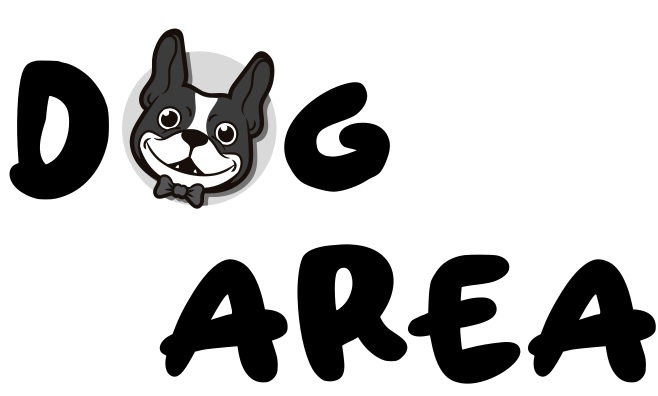6 Common Health Issues That All Pug Owners Need to Know About
In today`s topic we thought to highlight some of the most common Pug related health issues that any owner of this amazing breed might have to deal with at some point.

The main majority of the health problems found in the Pug are directly connected to their body structure. Some of the physical characteristics that make this dog such an appealing canine may result in chronic health issues.
Most future dog owners go for the Pug for their short-face and cute eyes, but sometimes these exact features are the reason of concern as they may lead to breathing or eye problems.
But that`s not all! Their compact and short physical constitution, with their coiled tail and wrinkles, may cause health problems as well.
Although some of these medical conditions and health problems aren`t life-threatening, it`s best for you to be aware of them and take the proper measures of precaution so you can extend their life as much as possible and keep your canine healthy and happy.
Eyes
The eyes of a Pug are predisposed to infection as well as injury due to their protruding anatomy.
They are prone to entropion, which is a genetic illness where their eyelashes develop towards the inside scratching their eyes. If they aren`t taken to the veterinarian and offer treatment, it can become really difficult for them to see and in certain situations even blindness could happen.
Another medical condition which might affect their eyes is corneal ulcers because of their eyes` degree of protrusion.
Some of the signs associated with this condition are visible scratches, squinting eyes and cloudy eyes. If treatment isn`t offered in good time, vision issues may occur.
Another common issue related to a Pug`s eyes is dry eyes. This condition is also known as Keratoconjunctivitis sicca (KCS) and is generally the result of insufficient production of tears or blocked tear ducts that would maintain the eye well lubricated.
Signs include periodic eye infections, red eyes with a bit of thick discharge and excessive blinking. Bacterial infection might also be the result of dry eyes because of insufficient tears to flush bacteria or dirt from their eyes.
Other eye related issues can include:
- Exposure keratopathy syndrome – EKS is a corneal illness which in brownish pigmentation which “develops” over the cornea. This leads to marked corneal exposure and might result to a reduced ability of blinking in a normal manner and rapid evaporation of tears, both of them being able to worsen exposure keratopathy syndrome.
- Cataracts – This occurs when the lens develop some kind of patches, making the vision somehow cloudy. In time, the patches generally become larger in size, leading to misty or blurry vision, and even blindness.
- Distichiasis – This is a very rare medical disorder that is defined as an abnormal development of lashes from the meibomian glands` orifices on the tarsal plate`s posterior lamella.
Breathing
Pugs have a narrow nasal cavity due to their rather stubbed snouts, which makes them more prone to breathing related problems every now and then. Because of this, debris or fluids might sometimes become stuck and make the canine in question sneeze.
Among the most common condition which leads to breathing problems is Stenotic Nares. In fact, this is a genetic abnormality which has been linked to nasal soft tissues. Each time your little pal will take a breath, the tissue will collapse leading to breathing issues.
Another similar problem is related to the elongated soft palate. The medical illness takes place when a very large soft palate extends over the respiratory tract, therefore reducing the typical respiratory tube. This will lead to your canine cough and experience other breathing issues.
And a 3rd medical condition that we wanted to mention is collapsed trachea, which is quite common among Pugs. It`s a genetic malformation where the cartilage rings in the windpipe of the canine collapse.
If your Pug experiences this condition, they should be closely put under observation and secure a fast recovery.
It`s essential to remain vigilant on how your little friend breathes, especially during the summer season.
Skin
The skin of a Pug is very sensitive to several skin disorders. Most of them are caused by weak immunity, parasites, hormonal imbalances or trauma.
Among the most common suck skin issues is Pyoderma, a disorder that is the result of bacterial infection. This health problem is generally characterized by pimples filled with pus, blisters filled with blood or small red bumps.
The affected body areas of this illness are between the toes as well as the facial fold lips. Luckily, this medical condition can easily be prevented by keeping your dog`s skin dry and clean at all times as well as performing regular inspections on your little pal`s skin.
On the other hand, Pugs of younger age typically experience bad smell and canine acne, which are the result of skin yeast infection. Other dog-related skin issues may include:
- Ringworm – This represents a skin fungal infection and is quite common among canines with weak immunity.
- Atopy – When this skin problem occurs, canines become hypersensitive when it comes to particular allergens. This represents a seasonal health issue where our furry friends normally experience scratching and itching.
Joints
Joint disorders, like hip dysplasia or elbow dysplasia, take place when joints do not evolve in a right way and lead to degenerative joint disease.
Joint and bone issues could be handled and there`re schemes that you can use to screen your canine and find out what chances are there for them to experience joint issues.
Neurological Problems
Some dogs of this particular breed can be predisposed to specific brain disorders. This sometimes includes epilepsy as well as a severe genetic disease that is rather unique to this breed known as Pug dog encephalitis (PDE).
According to School of Veterinary Medicine, about 1.2% of Pugs die of PDE, also known as necrotizing meningoencephalitis or NME.
This is a central nervous system`s inflammatory illness which generally develops and leads to death. Its uniqueness stands in the fact that it`s idiopathic, meaning the cause is still unknown.
| Symptoms of Pug Dog Encephalitis |
|---|
| Behavioral changes |
| Head tilt |
| Disorientation/confusion |
| Walking in circles |
| Lethargy |
| Blindness |
| Seizures |
| Pressing their head against other objects or walls |
| Depression |
| Weakness |
| Neck stiffness |
| Loss of coordination |
In lots of situations, the signs of Pug dog encephalitis will evolve quite fast (weeks or even days) and lead to death sometimes suddenly, generally as a result of seizure.
In other situations, Pugs are able to live longer under anticonvulsant medications to manage seizures.
Eventually, all affected dogs of this particular breed give in to this illness, generally within a few months after signs started.
When it comes to this medical condition, dog owners should sick veterinarian help at the first appearance of signs.
As Pug dog encephalitis isn`t the only cause of seizures in this type of dogs, your canine will most certainly be investigated for other illnesses like poisoning, epilepsy or intracranial tumor.
Hemivertebrae
Pugs have cute tails, but if you are a dog owner, it`s essential for you to be aware of all the issues that come with it. One of these problems is a spinal disorder called hemivertebrae.
Hemivertebrae are the spine`s bone shaped in an abnormal manner. Due to this abnormal shape, the bones have a tendency of not aligning properly with their spine`s adjacent bones. – Check this out!
In turn, this might result in the spinal cord`s deformity or instability, which can also lead to nerves or spinal column becoming damaged.
Often, this leads to pain (at times, a lot of pain), loss of function of the hind legs, ataxia, and even lack of ability to manage the passage of faeces or urine.
This medical illness can limit both the length as well as the quality of a Pug`s life.
Myelopathy
Dogs of this breed can be predisposed to a neurological illness of their spine that is rather recently recognized and is known as Pug myelopathy.
This condition is believed to be the most common cause ataxia, which is a technical term of rear leg incoordination, and develops to paralysis of the rear legs in 1 to 4 years.
At first it was generally known as “weak rear,” but it`s also known as “subarachnoid diverticulum,” “Pug constrictive myelopathy” or “facet hypoplasia.”
In our present times, this medical condition is known as a common health issue among Pugs. As the original name implied, the rear limbs seem to be rather weak, but this is due to a neurological deficiency which progresses in the dog`s spine.
Affected Pugs might start dragging their legs at first, show issues when trying to jump, and might be urinary or fecal incontinent.
Unlike DM (degenerative myelopathy), this condition only affects the dog`s rear legs, and although they may have very similar symptoms in the initial stages, Pug myelopathy develops to a tragic stage where it reaches paralysis and even death.
There`s a research at Michigan State University that is funded by the Pug Dog Club of America which has only one particular goal and that is to unravel any connections between the above conditions.
BOAS
Also known as brachycephalic obstructive airway syndrome, this medical condition takes places when the soft palate is enlarged and the nostrils of the canine are diminished.
These lead to respiratory issues and signs like “noisy” breathing, hard breathing as well as exercise intolerance.
Dogs of this breed are predisposed to this and it`s frequently the exact cause of one of their main characteristics: wheezing or snoring.
This can be managed with both medical and surgical options, and dog owners should talk to their veterinarian if they consider their Pug is experiencing any signs of BOAS and showing any hard breathing.
Tail Issues
Pugs have Q curl tails and a Pug`s tail is probably one of the cutest features. But sometimes a tail`s Q curl comes with problems. Typically, the tail`s part where it gets folded has a tendency to hold moisture, and this generally becomes the ideal environment for fleas and insects to “prosper.”
For Pugs is practically impossible to turn and reach the tail with their mouth to catch these irritating fleas. In turn, these will always try to benefit from this, so they thrive as much as possible down there. – Read more!
Eventually, the Pug might become frustrated and start chasing their tail with no chance of ever getting it. All this spinning in circles and trying to catch their tail will go nowhere, and in the end, this may lead to tail injuries, allergic reactions or irritation.
Watch out for any symptoms of reddening at the tail`s base. Any sign of physical injury, blood or irritation needs to be seen as a red flag and immediately get in touch with a vet.
Final Word
Pugs are amazing little pets that can bring lots of benefits to any dog owners. Unfortunately, they also have a few common health problems that sooner or later need to be dealt with just like any other dog breed out there.
